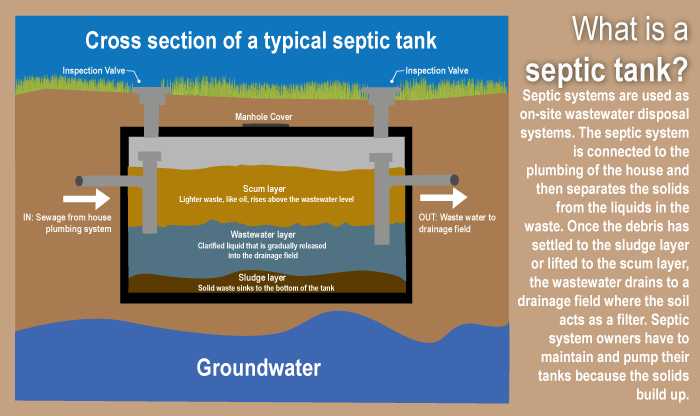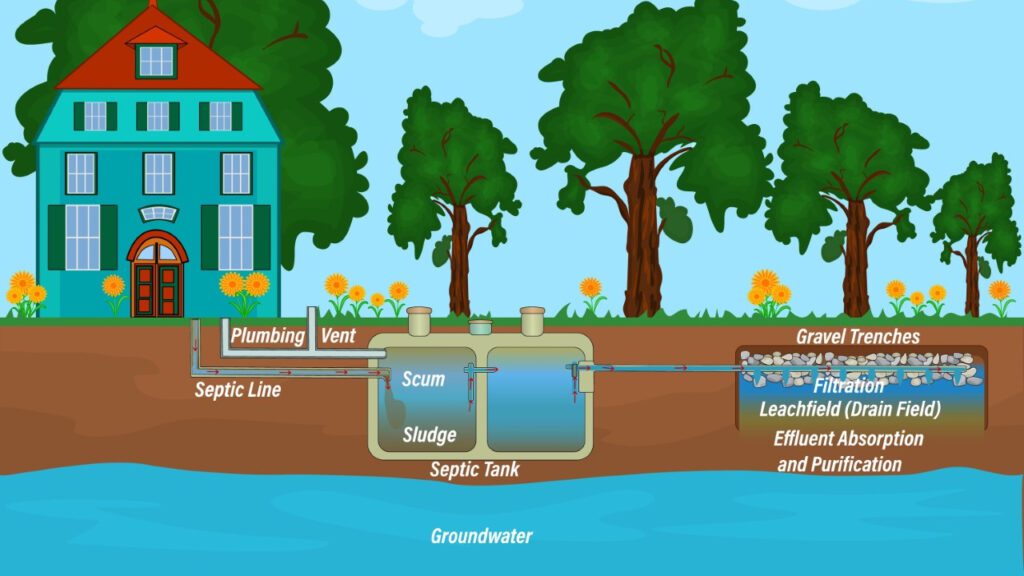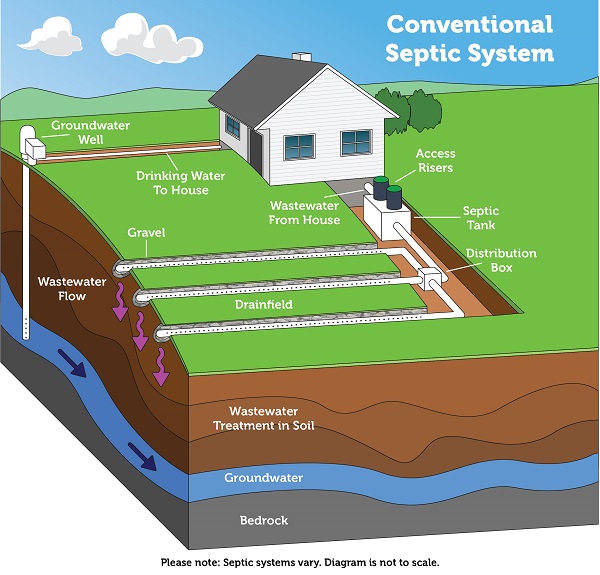In the realm of septic systems, a common question finds its way into the minds of homeowners: should you flush every time on septic? This seemingly simple query holds a significant impact on the efficiency and maintenance of septic systems. While some may argue that conservation is key, others advocate for regular flushing to maintain optimal function. Exploring both sides of the debate, this article delves into the factors to consider when deciding whether to flush every time or modify one’s flushing habits on a septic system. Find out how your flushing practices can impact the health and longevity of your septic system.

What is a septic system?
Definition
A septic system is an underground wastewater treatment system commonly used in rural areas or areas not served by municipal sewage systems. It consists of a septic tank, distribution box, and drain field, working together to effectively treat and dispose of household wastewater.
Function
The primary function of a septic system is to treat and remove harmful bacteria, viruses, and other contaminants from the wastewater generated in your home. It operates by allowing bacteria to break down and decompose solid waste, while the liquid waste is filtered and released into the soil for further treatment.
Components
The main components of a septic system include:
-
Septic Tank: This is where the wastewater enters from your home. It is a large underground tank made of concrete or fiberglass and is designed to allow solids to settle at the bottom, while oils and scum float to the top.
-
Distribution Box: Once the solids are separated in the septic tank, the liquid wastewater, called effluent, flows into the distribution box. From there, it is evenly distributed to the drain field.
-
Drain Field: The drain field consists of perforated pipes buried in gravel-filled trenches. The effluent from the distribution box enters these pipes and is released into the surrounding soil, where further natural filtration and purification occur.
Maintenance
Proper maintenance is essential to ensure the longevity and efficiency of your septic system. Regular pumping every three to five years is necessary to remove accumulated solids from the septic tank. Additionally, avoiding excessive use of chemicals and practicing proper waste disposal are crucial to prevent clogs and system malfunctions.
How does a septic system work?
Gravity System
In a gravity septic system, the wastewater flows by gravity from your home to the septic tank. The force of gravity moves the wastewater through the system, allowing it to separate into solids, scum, and effluent. The effluent then travels from the septic tank to the drain field, where it is naturally filtered and treated as it percolates through the soil.
Pressure Distribution System
A pressure distribution septic system utilizes a pump to evenly distribute the effluent from the septic tank to the drain field. The pump applies pressure, pushing the effluent through a network of pipes and ensuring uniform distribution across the drain field. This system is commonly used in areas with challenging terrain or soil conditions.
Mound System
A mound septic system is employed when the soil conditions or high water table prevent the installation of a traditional drain field. The effluent is pumped from the septic tank into a specially designed mound made of sand and gravel. The mound allows for additional filtration and treatment before the effluent is gradually released into the surrounding soil.

What happens when you flush?
Flowing into the septic tank
When you flush a toilet or drain water from your sinks, the wastewater flows through the pipes and enters the septic tank. As the wastewater enters the tank, it separates into three layers: solids that sink to the bottom, oils and scum that float to the top, and the liquid effluent in between.
Digestion and separation process
Inside the septic tank, natural bacteria break down the solid waste, converting it into sludge. This process is known as digestion. The bacteria also decompose the oils and scum, transforming them into a more manageable substance. The digested sludge settles at the bottom of the tank, while the partially treated effluent remains in the center layer.
Effluent disposal
Once the effluent inside the septic tank has undergone partial treatment, it flows out of the tank into the distribution box. From there, it is evenly distributed to the drain field, where it percolates through the soil. The soil acts as a natural filter, removing any remaining contaminants and purifying the effluent before it enters groundwater or nearby bodies of water.
Advantages of flushing every time
Preventing foul odors
By flushing every time you use the toilet or any other water fixture in your home, you ensure a constant flow of wastewater through your septic system. This prevents the buildup of stagnant water and foul odors that can occur when water is not regularly flushed through the system.
Maintaining optimal system efficiency
Flushing every time helps maintain the proper balance of water and waste in your septic system. Adequate water flow allows for efficient decomposition of solids and keeps the bacterial activity at an optimal level. This ensures that your septic system can effectively treat the wastewater and prevent potential malfunctions.
Preventing clogging and backups
Flushing every time helps prevent clogs and backups in your septic system. Regular water flow keeps the pipes clear, preventing any accumulation of debris or solids that may obstruct the wastewater flow. By avoiding clogs, you minimize the risk of costly repairs or the need for emergency pump-outs.
Avoiding costly repairs
Properly flushing every time can significantly extend the lifespan of your septic system. By continuously providing a steady flow of wastewater, you minimize the chances of blockages, backups, or overload. This proactive approach can save you from costly repairs and replacements in the long run.

Disadvantages of flushing every time
Excessive water usage
Flushing every time can lead to excessive water usage, especially if you have a large household or frequently use water fixtures throughout the day. This increased water consumption may not only strain your septic system but also contribute to higher water bills.
Overloading the system
While flushing every time can be beneficial, it is essential to consider the capacity of your septic system. If your system is undersized or if you have a high water usage pattern, flushing every time may overload the system and impair its ability to effectively treat the wastewater. It is important to know the limits of your septic system and adjust your flushing habits accordingly.
Releasing excess nitrogen
Flushing every time can potentially lead to the release of excessive nitrogen into the drain field. Nitrogen is a common component of household wastewater, and when it enters the soil in large quantities, it can be harmful to the environment. Nitrogen overload may cause groundwater contamination or contribute to the growth of algae in nearby bodies of water.
Potential harm to the environment
While septic systems are designed to treat wastewater and minimize environmental impact, excessive flushing can strain the system and potentially harm the environment. If your septic system is not adequately sized or maintained, the release of untreated effluent into the soil can contaminate groundwater or nearby water sources, posing a risk to human health and ecosystems.
Factors to consider
System size and capacity
When determining whether to flush every time, consider the size and capacity of your septic system. Larger systems can handle a higher volume of wastewater, making flushing every time less likely to overload the system. However, smaller systems may have limited capacity and require more mindful water usage.
Water usage patterns
Understanding your household’s water usage patterns is crucial when deciding whether to flush every time. If your household uses water frequently throughout the day, such as in a larger family, flushing every time may lead to excessive water consumption and strain your septic system. Adjusting your flushing habits to align with your water usage patterns can help maintain system efficiency.
Household size
The number of people in your household directly relates to the amount of wastewater generated. Larger households produce more wastewater, which can challenge the capacity of your septic system. Assessing your household size and considering the capacity of your septic system will help you determine the appropriate flushing habits for optimal system performance.
Septic tank maintenance
Regular maintenance of your septic tank is essential for its proper functioning. By scheduling regular pump-outs and inspections, you ensure that the tank remains free from excessive solids and any potential issues are detected early. Adequate septic tank maintenance can support the effectiveness of your septic system and influence your decision on flushing habits.

Alternative strategies
Flushing selectively
If you have concerns about excessive water usage, you can consider flushing selectively. This means only flushing waste and toilet paper, while disposing of other waste items in the trash. Flushing selectively can help reduce the strain on your septic system while maintaining proper waste disposal.
Dual-flush toilets
Dual-flush toilets offer a convenient and eco-friendly option for adjusting your flushing habits. These toilets have two flush options: one for liquid waste and another for solid waste. By utilizing the appropriate flush option, you can minimize water consumption without compromising proper waste removal.
Water-saving fixtures
Installing water-saving fixtures, such as low-flow toilets and faucets, can significantly reduce water usage in your home. These fixtures are designed to use less water without compromising performance, allowing you to conserve water while still maintaining good flushing habits.
Using septic-safe products
Choosing septic-safe household products, including toilet paper, cleaning agents, and personal hygiene products, can contribute to the effective operation of your septic system. These products are specifically designed to be biodegradable and not interfere with the natural bacterial processes in your septic system.
Tips for septic system maintenance
Regular pumping
To prevent accumulation of solids and ensure optimal system performance, it is important to schedule regular pumping of your septic tank. On average, septic tanks should be pumped every three to five years. However, the frequency may vary depending on factors such as household size and water usage patterns.
Avoiding excessive use of chemicals
Excessive use of chemicals, such as harsh cleaners and antibacterial soaps, can disrupt the natural bacterial balance in your septic system. These chemicals can kill the beneficial bacteria responsible for wastewater treatment. Opt for environmentally friendly cleaning products and use them in moderation to maintain a healthy septic system.
Proper disposal of waste
To prevent unnecessary strain on your septic system, it is crucial to dispose of waste properly. Avoid flushing items such as diapers, sanitary products, wipes, or paper towels down the toilet, as they can cause clogs and damage to your septic system. Instead, dispose of these items in the trash.
Regular inspections and maintenance
Regular inspections by a professional septic system service provider are essential for identifying any potential issues before they become major problems. These inspections can help detect leaks, blockages, or any signs of system failure. Additionally, practicing routine maintenance tasks, such as checking for leaks or damaged pipes, can contribute to the overall health and longevity of your septic system.

Signs of septic system problems
Foul odors
Unpleasant odors emanating from your plumbing fixtures, drain field, or septic tank may be indicative of septic system issues. The presence of foul odors, especially inside your home, could signal a backup or malfunction within your septic system.
Slow draining fixtures
If your sinks, showers, or toilets are draining slowly or experiencing backups, it could indicate a blockage or overload in your septic system. Slow draining fixtures should be investigated promptly to prevent further damage or system failure.
Gurgling sounds
Gurgling sounds coming from your drains or toilets when water is flushed can be a sign of air trapped in the plumbing system. This may indicate a blockage or malfunction within your septic system that requires attention.
Soggy or mushy ground
Excessively wet or mushy areas in your yard, especially near the drain field or septic tank, can indicate a septic system failure. These soggy areas may suggest that the effluent is not properly percolating into the soil, which could be due to a blockage or an issue with the drain field.
Consulting a professional
Importance of professional advice
When it comes to septic systems, seeking professional advice is essential for proper maintenance and troubleshooting. Professionals have the expertise to assess your specific system, identify potential problems, and provide recommendations tailored to your situation.
Septic system inspections
Regular inspections by a professional septic system service provider are crucial to detect any issues or potential problems before they escalate. These inspections typically include a thorough assessment of the septic tank, distribution box, drain field, and overall system performance.
When to seek professional help
If you experience any signs of septic system problems, it is important to seek professional help promptly. Certified septic system professionals can diagnose the issue, provide appropriate solutions, and ensure that your septic system is functioning effectively and safely.
In conclusion, understanding the functioning and maintenance requirements of your septic system is crucial for its long-term performance and preserving the health of your household and the environment. By considering factors such as system size, water usage patterns, and proper maintenance practices, you can make informed decisions regarding flushing habits and implement strategies to maximize the efficiency and lifespan of your septic system. Regular inspections and consultations with professionals are essential for addressing any potential issues and ensuring the continued functionality of your septic system.
